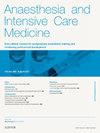提供急性疼痛服务
IF 0.3
Q4 ANESTHESIOLOGY
引用次数: 0
摘要
传统上,在急性住院期间治疗病人一直是住院疼痛小组的角色。住院病人疼痛小组的职权范围现在扩展到整个病人的旅程,包括手术病人术前和出院后。治疗病人的疼痛主要是一种道德和人道主义义务,但有效的疼痛管理也可以改善临床结果。手术或创伤引起的疼痛的治疗可以减少并发症的发生率,例如通过改善活动能力和患者深呼吸和咳嗽的能力。当患者早期活动时,他们降低了静脉血栓栓塞、肺栓塞和压疮的风险。因疼痛而不能充分咳嗽或深呼吸的患者患肺炎和呼吸系统疾病的风险较高。从卫生经济学的角度来看,更早动员和并发症更少的患者在医院的时间更短,因此费用更低。未经治疗的严重疼痛也可能使患者易患慢性疼痛或长时间服用阿片类止痛药。本文章由计算机程序翻译,如有差异,请以英文原文为准。
Delivering an acute pain service
Traditionally it has been the inpatient pain team's role to treat patients in hospital during an acute admission. The remit of the inpatient pain team is now extending to the whole patient's journey including surgical patients pre operatively and post discharge. The treatment of a patient's pain is primarily an ethical and humanitarian obligation, but effective pain management may also improve clinical outcomes. The treatment of pain from surgery or trauma reduces complication rates for example by improving mobilization and a patient's ability to take deep breaths and cough. When patients mobilize early they reduce their risk of venous thromboembolism, pulmonary embolism and pressure sores. A patient that cannot adequately cough or take deep breaths due to pain is at higher risk of pneumonia and respiratory compromise. From a health economics perspective patients who mobilize earlier and have fewer complications spend less time in hospital and therefore cost less. Untreated severe pain may also predispose patients to develop chronic pain or to take opioid pain medication for prolonged periods of time.
求助全文
通过发布文献求助,成功后即可免费获取论文全文。
去求助
来源期刊

Anaesthesia and Intensive Care Medicine
ANESTHESIOLOGY-
CiteScore
0.50
自引率
0.00%
发文量
152
期刊介绍:
Anaesthesia and Intensive Care Medicine, an invaluable source of up-to-date information, with the curriculum of both the Primary and Final FRCA examinations covered over a three-year cycle. Published monthly this ever-updating text book will be an invaluable source for both trainee and experienced anaesthetists. The enthusiastic editorial board, under the guidance of two eminent and experienced series editors, ensures Anaesthesia and Intensive Care Medicine covers all the key topics in a comprehensive and authoritative manner. Articles now include learning objectives and eash issue features MCQs, facilitating self-directed learning and enabling readers at all levels to test their knowledge. Each issue is divided between basic scientific and clinical sections. The basic science articles include anatomy, physiology, pharmacology, physics and clinical measurement, while the clinical sections cover anaesthetic agents and techniques, assessment and perioperative management. Further sections cover audit, trials, statistics, ethical and legal medicine, and the management of acute and chronic pain.
 求助内容:
求助内容: 应助结果提醒方式:
应助结果提醒方式:


